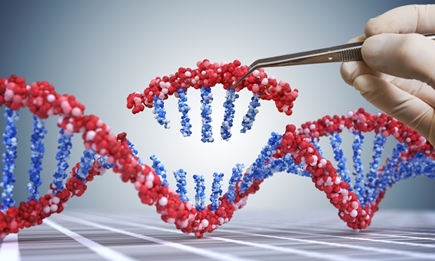|
DIVULGAÇÃO
Human clinical trial suggests CRISPR feasible for fighting cancer. CRISPR allows scientists to make precise edits to the genes in living cells, removing harmful genes and introducing new beneficial ones. Animal tests of the technique have shown great promise in treating a range of diseases, such as cervical cancer, muscular dystrophy and HIV. Human tests have begun in recent years, as scientists targeted lung cancer and rare blood diseases with promising results. But there have still been concerns that CRISPR may not be completely safe, as the possibility of unintended mutations looms. It was also questioned whether edited cells would stick around in the body long enough to be very effective.  The first US clinical trial of CRISPR gene-editing in human immune cells has yielded positive safety results.
“Our data from the first three patients enrolled in this clinical trial demonstrate two important things that, to our knowledge, no one has ever shown before,” says Carl June, senior author of the study. “First, we can successfully perform multiple edits with precision during manufacturing, with the resulting cells surviving longer in the human body than any previously published data have shown. Second, thus far, these cells have shown a sustained ability to attack and kill tumors.” For the study, the researchers collected T cells from the blood of three patients who had advanced cancers that weren’t responding to traditional therapies. They then used CRISPR to remove three genes from the T cells, which should make them more effective at seeking out and destroying cancer cells. One of the edits took out the “checkpoint” protein PD-1, which cancer often hijacks to stop immune cells attacking. The other two removed receptors from the T cells’ surface, paving the way for a fourth edit that inserted a new synthetic T cell receptor that guides the immune cells towards a particular cancer antigen. Then, these edited T cells were reintroduced into the patients’ bodies. The researchers monitored the patients over the following months, and the results were impressive. None of the patients rejected the edited cells, and blood tests showed that the edited T cells had all taken root and were thriving. To test whether they still functioned, the team extracted them from the patients’ blood and showed that they still killed cancer cells in the lab, even up to nine months after infusion. That’s far longer than the window of a few days suggested by previous studies. “This new analysis of the three patients has confirmed that the manufactured cells contained all three edits, providing proof of concept for this approach,” says June. “This is the first confirmation of the ability of CRISPR/Cas9 technology to target multiple genes at the same time in humans and illustrates the potential of this technology to treat many diseases that were previously not able to be treated or cured.” None of the patients responded to the therapy, but that isn’t an indictment on the therapy itself. After all, this was a test primarily focused on safety, and these patients were selected because their cancers were advanced and resistant to treatment. And in that regard it was a success – there were no serious adverse effects, and although the team noticed some minor DNA changes, these decreased over time. While there's still much to learn, this safety study shows that CRISPR gene-editing is a technique worth investigating further in future clinical trials. “The authors have set another milestone here by showing the feasibility of using CRISPR to edit human immune cells which have been engineered in the hope they might one day be a tool to help to fight cancer,” says Waseem Qasim, Research Professor at University College London, who was not involved in the study. “This trial provides safety data and the results suggest the change can be delivered to the cells without obvious side effects – but of course we need to see results from larger numbers of patients in order to determine how effective the treatment is.” The research was published in the journal Science. The team explains CRISPR in the video below. What is CRISPR? Penn Medicine Explains (video). By Michael Irving. University of Pennsylvania. Posted: Feb 06, 2020. Assuntos Conexos: China to lead charge on first crispr trial in humans. Researchers use CRISPR-Cas9 as a programmable nanoparticle for DNA nanomapping. CRISPR: Implications for materials science.
|
||||||||||||||||||||||||